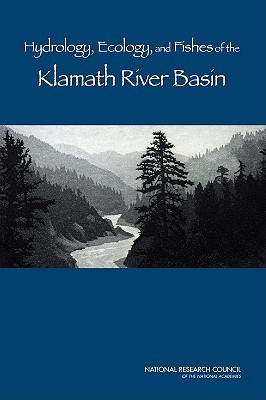
- Afhalen na 1 uur in een winkel met voorraad
- Gratis thuislevering in België vanaf € 30
- Ruim aanbod met 7 miljoen producten
- Afhalen na 1 uur in een winkel met voorraad
- Gratis thuislevering in België vanaf € 30
- Ruim aanbod met 7 miljoen producten
Zoeken
Hydrology, Ecology, and Fishes of the Klamath River Basin
National Research Council, Division on Earth and Life Studies, Water Science and Technology Board, Board on Environmental Studies and Toxicology, Committee on Hydrology Ecology and Fishes of the Klamath River
Paperback | Engels
€ 79,95
+ 159 punten
Omschrijving
The Klamath River basin, which spans parts of southern Oregon and northern California, has been the focus of a prominent conflict over competing uses for water. Management actions to protect threatened and endangered fish species in the basin have left less water available for irrigation in dry years and heightened tensions among farmers and other stakeholders including commercial fishermen, Native Americans, conservationists, hunters, anglers, and hydropower producers. This National Research Council book assesses two recent studies that evaluate various aspects of flows in the Klamath basin: (1) the Instream Flow Phase II study (IFS), conducted by Utah State University, and (2) the Natural Flow of the Upper Klamath Basin study (NFS), conducted by the U.S. Bureau of Reclamation (USBR). The book concludes that both studies offer important new information but do not provide enough information for detailed management of flows in the Klamath River, and it offers many suggestions for improving the studies. The report recommends that a comprehensive analysis of the many individual studies of the Klamath river basin be conducted so that a big picture perspective of the entire basin and research and management needs can emerge.
Specificaties
Betrokkenen
- Auteur(s):
- Uitgeverij:
Inhoud
- Aantal bladzijden:
- 272
- Taal:
- Engels
Eigenschappen
- Productcode (EAN):
- 9780309115063
- Verschijningsdatum:
- 11/04/2008
- Uitvoering:
- Paperback
- Formaat:
- Trade paperback (VS)
- Afmetingen:
- 152 mm x 226 mm
- Gewicht:
- 453 g

Alleen bij Standaard Boekhandel
+ 159 punten op je klantenkaart van Standaard Boekhandel
Beoordelingen
We publiceren alleen reviews die voldoen aan de voorwaarden voor reviews. Bekijk onze voorwaarden voor reviews.











